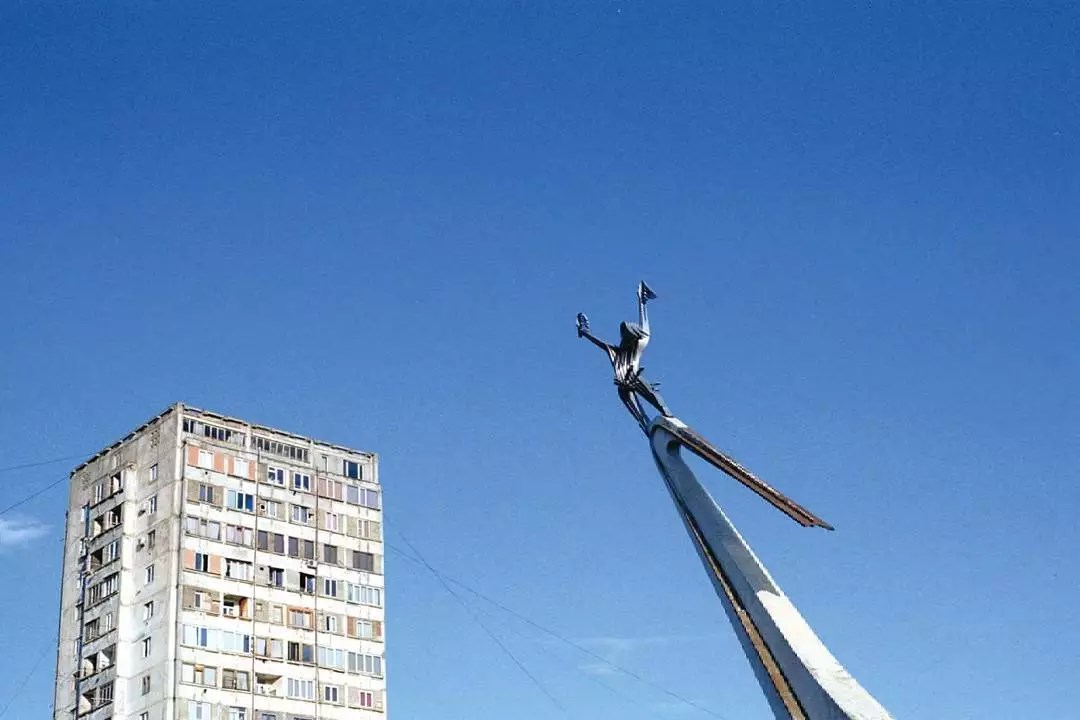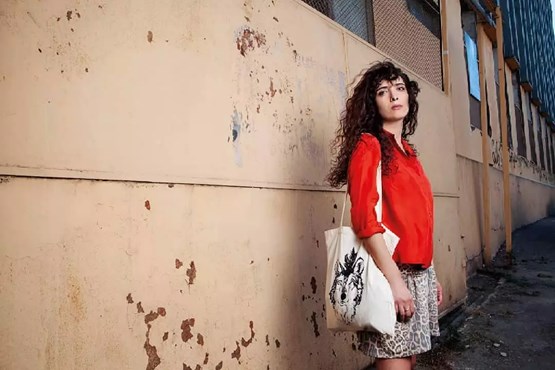
Didi Dube
15.10.2015"When the pressures of modern living become heavy, the harassed city-dweller often refers to his teeming world as a concrete jungle. This is a colorful way of describing the pattern of life in a dense urban community, but it is also grossly inaccurate... The comparison we must make is not between the city-dweller and the wild animal, but between the city-dweller and the captive animal... The modern human animal is no longer living in conditions natural for his species. Trapped, not by a zoo collector, but by his own brainy brilliance, he has set himself up in a huge, restless menagerie where he is in constant danger of cracking under the strain...
Clearly, then, the city is not a concrete jungle, it is a human zoo."
The inhabitants of cities were evaluated coarsely in this way for a variety of reasons by British anthropologist Desmond Morris in his book The Human Zoo: A Zoologist's Classic Study of the Urban Animal.
Ecological pollution, emissions, and urban noise had not been listed by the author. Instead, Morris would examine city life as the unstoppable source of the stress that we purposefully inflict upon ourselves. Yet today, lack of space and population density are no longer a problem. On the contrary, if we start to transform our cities, they will all show a potential to become smart and cheap, effective and comfortable space to inhabit.
It is seven o'clock in the morning. A bleak, frosty November morning. The block of flats is still asleep. A neighbor above takes their car out of the garage at 8:50. Then others soon join in. I however, have such a keen sense of smell, that I can identify the car by the odor of the fuel, and I can tell whether the car that is bellowing smoke belongs to the twins' father, or if it belongs to the high-ranking police officer living on the top floor.
Every city has its own aroma. Parsing these aromas in foreign cities is my favorite amusement. In Tbilisi however, it is no longer possible. I can no longer sense the smell of baking bread clinging to the side of a tone clay oven, the familiar smell of old pianos stuffed with moth-balls, the tempting aroma of home-cooked food and fried potatoes in particular wafting out of houses, or the refreshing smell of pines coming down from Mtatsminda. It's already been quite some time that there is only the smell of fuel in Tbilisi.
We live on one of the main thoroughfares of the city. The bedroom window looks out into four lanes of constantly moving traffic. On the sidewalks on both sides of the street, there is parking as far as the eye can see. Our sidewalks have long since been occupied by makeshift parking lots robbing pedestrians of a place to walk. Not only does this obstruct people from getting around, and make walking uncomfortable, but it poses a mortal danger to children who might dart out into the street. It is also an attack on public health, as transportation is the primary source of air pollution in Tbilisi.

There are almost 400, 000 cars in use in Tbilisi. Half of them are more than 20 years-old. On average, about 170 cars enter the country each day, 77% of which, are over ten-years-old. The older the car is, the more its emissions toxicity increases. As a result, the public health dangers become more acute, some of which are already visible – drying out of the skin and hair, diseases of the respiratory tract, and allergies. Some of the ill health effects come about over time, like tumors and psycho-neurological disorders.
“A system for monitoring air pollution is not up to standards and neither does it provide the possibility of comparing separate districts according to pollution levels,” - I read in the official letter sent from the Ministry of Environmental Protection. Air pollution is checked at three stations, but not over the course of 24 hours, and not all of the primary pollutants are measured.
Norms for air pollution are established by the World Health Organization (WHO). Yet, the WHO states that only 12% of the people living in cities throughout the world live in environments that meet the norms.
Three years ago, a campaign against diesel was started in the United States. and in some other countries. A fuel which until then was considered to be more or less harmless turned out to emit NO2 twice greater than gasoline, along with more than 40 other types of pollutants. The US Respiratory Health Association notes on their website that “Only soot particles of ultra-microscopic size cause asthma and heart attacks, lung cancer, and even infant mortality.”
Georgia didn't participate in that campaign. According to the Georgian statistics office “In 2013, 461, 000 tons of diesel were used" in our country. Moreover, ublic transportation runs entirely on diesel – including buses and yellow minibuses. The last annual account on the Tbilisi Transportation Company website is from the year 2013. It's written there that 9,632,153 liters of diesel were used by buses in 2013. Unfortunately, I can no longer offer a more detailed analysis of this data, as no other type of data is available about the diesel distribution to each region or city district. Thus we don't know the full picture of the damage. We can only guess that we who live at the city's main arteries of transportation - like the Tsereteli Avenue is - and who are the frequent drivers and passengers breath the most emissions; we are the ones who are exposed to these emissions most frequently and for the longest period. We have the unpleasant privilege of having to ceaselessly endure thousands of vehicles passing by our windows daily.

I now try to discern what circulates into my bedroom each day from only the buses and minibuses and begin solving a new equation: 10 bus lines complete a daily route on Tsereteli Avenue. The buses included in these lines pass by my house at least 1,000 times a day. In regard to the minibuses, at least 13 lines drive a daily route on the section of Tsereteli Avenue where I live. The minibuses included in these 13 lines pass by my window a minimum of 3,000 times each day. Both means of transportation still emit more than 40 air pollutants in the course of about 12 hours, along with the aforementioned NO2 that is so acutely characterized by the US Respiratory Health Association.
In short, Tsereteli Avenue is an industrial thoroughfare, which puffs smoke 24 hours a day and 7 days a week.
There was a time when watching passengers from my window in a late bus at midnight in the burning heat of summer seemed romantic to me. Today however, taking pleasure in industrial poetry is deceiving oneself.
It's true, the quality of fuel has been regulated with comparatively strict norms since 2012. Yet, the sulfur content in automotive gasoline and diesel remains high and still exceeds established norms by 25-30 times according to EU standards.
I'm surprised how cities sometimes forget significant episodes of their own biographies and how they become the victims of more violent, more aggressive current events. The Soviet period became such a stamp for the Didube - the district that was first mentioned in historical documents of the 11th-18th centuries. Dinamo Stadium was built there in 1935, then Didube Bridge, the Metropolitan, the Maud-Kamvol, Mechanical Factory, and then the exhibition pavilions for the People's Agricultural Achievements. Over the course of these events, the old meaning of the word Didube (Didi Didube – an expansive, wide open space) disappeared from the memory of the residents of this district. Even the local urban legends and the district's urban functions faded away (Queen Tamar is said to have put on a wedding feast here; and on the bank of the Mtkvari where Eliava Bazaar now stands, there had been wide-ranging gardens, while there was a fortress for self-defense against incursions from the Lezgians where Dinamo Stadium now sits). In turn, the composition of Didube's modern history began. It is seen well on some photos kept at the National Archives: up until the 1950s, only Pobedas and Volgas sporadically flowed by on this four-lane avenue. Alongside some clay-colored apartment buildings illuminated by the sun, only a few insignificant marks were made by plane-trees and bushes planted on the sidewalks. Today, I look at these photos from the Tsereteli Avenue of the past, and it seems to me that I'm watching a prelude before a great chaos ensues or the silence of a foreboding omen that will come to life without warning and begin raging.
When local urban politics are effectively conformed to habitants’ needs, it is no problem to preserve the urban memory and characteristics of certain districts, while also transforming these areas with innovative means; and applying new economic and socio-cultural functions.
Didube however, chaotically followed its own industrial purpose with inertia – not as an exception – but as an illustration of the problems of other districts of Tbilisi. After the halt of factories and industrial enterprises during the 1990s, the locality received and assimilated as logical heritage: Eliava Bazaar, industrial kitchens and stores for restaurant inventory and auto parts; linens, Turkish yeast, thermal insulation systems, juice extractors, packages of second-hand clothes, locks and keys – all of these are my neighbors – this is what Tsereteli Avenue is like today.
Once I attempted to record the street noise at night by placing a voice recorder on the open window sill. The sound frequencies went up and down like the convoluted waves of an electrocardiogram – a continuous fizzling, roaring, and hissing was heard – so peaceful, so remote, so harmonic with its staccatos, allegros and pianos, like water music, tender and meditative. “Urban Sea” was the name I gave to what I had involuntarily created.
“You know, I'm the administrator of the greenest region,” Irma Zavradashvili, the administrator of Didube, tells me in the administration office's reception room. After a short pause, she says with a smile, “But at the expense of the Dighomi Forest Park.”
If I wasn't writing an article, I would still seek an appointment with with her as a local citizen. Yet, the Didube administrator is not the one who makes the decisions. Up until 2016, funds for increasing green cover and fighting against emissions and the chaotic flow of traffic have generally not been taken into account in the district budget. The administrator hopes she will attain a marking out of the budget for the year 2016 at least. Until then, changes come from the top down. Such is the “A Million Trees” project. The project even has a beautiful website where an electronic tableau has been included and the indicator changes on the tableau for every tree planted. 130,843 trees is the last measure. I look at Tsereteli Avenue on an interactive map. Didube has never been especially green, but from above, those parts of the city really resemble concrete jungles. Out of the 130,843 trees planted, 88 trees have fallen to the lot of those of us living on the main road.

Our green island is actually the private property of Expo Georgia. If not for this oasis, where tumbling on green grass, rolling a ball, and even a morning jog are possible, all of us would forget that the everyday nature of city-life sometimes consists of such relaxing episodes too. Yet, only sometimes and not for everyone. If not the Expo Georgia, green zones and squares in or neighborhood are not up to modern standards: during the renovation of the various squares, either concrete slabs are placed or rusty slides are replaced with plastic ones.
This is one more discovery: In reality, my children are the children of industry. They see colorful dreams and calmly breathe in the total noise of the busy and polluted street. They run with pleasure on the crushed rock surface of the squares and shimmy by cars encroaching on the sidewalks without a problem – as if it must be like this.
Then they sit very calmly on a stone bench at the subway stop beyond the bridge. They breathe the smell of the railway tracks with insatiety and fidget while waiting for a delayed train.
I've already figured we are just a small, but vivid illustration of the problems that we all face while discussing the future of our cities. Urban theorists have long ago concluded that human eco-history has approached the critical point when it is necessary to radically change values and goals; that the level of ecological impact already exceeds the scale of the planet itself... Completely alienated from nature, humanity stands on the road of self-destruction, which may end in the ecological death of Earth.
A path of retreat is seen less so. We can no longer rid ourselves of the wide avenues, the asphalt covering plots of the planet too vast for the eye to see… we can longer rip it up.
“If there were only three cities with a population of 10 million on Earth in the beginning of the 1980s (Mexico City, New York, and Tokyo), there were already 2.9 billion people living in urban zones in 2000. In 25 years however, 5 billion people will live in a city. Cities use 60-80% of global energy and release greenhouse gases with the same percentage. Yet at the same time, cities can truly become effective and reduce the ecological trace of humans,” one essay about urban planning reads.
Cities can really do this. We have hope that it isn't too late. There is much being discussed and done to show how cities can yet save themselves. For example:
“In 2011, the City of Cape Town, South Africa launched a new bus rapid transit system called MyCiti that connects to a network of cycling paths and upgraded walkways, making it possible to walk or cycle to a bus stop in an integrated fashion... Now, we need more cities and more countries to get on board. Not only do we need more measures like this, we need to ensure all these measures benefit everyone, not just the rich or the poor.” - writes Maria Neira, the Director of Public Health at the World Health Organization.

Unfortunately, in developing countries, where they still can't see the problem clearly, and where a sequential plan is not on the agenda, this sort of information arrives late. And due to lack of public awareness the State stays indifferent in implementing innovative changes. The whole policy and urban planning approaches have to be changed here. Otherwise, projects like ‘The Tbilisi Mayor's Environmental Protection Strategy 2015-2020’ will be unable to really transform the city; If not a multidisciplinary problem-solving approach, such meaningless official documents are doomed for failure and forgetting.
I realize that the urban problems are so complex here that I have to start changes from my personal space. That's why I study the plants that ingest the harmful substances constituent of fuel, emissions, and the residues of domestic chemicals and paint; and I devote a large portion of my salary to collecting these plants. I feel the tragicomedy of my situation and I show even more tender care towards the sansevieria, dracaena, chlorophytum, and philodendron sitting on my window sill. Until the outer world changes, I will call on these plants for help in finding my share of urban happiness.
ეს სტატია მხოლოდ გამომწერებისთვისაა. შეიძინე შენთვის სასურველი პაკეტი
We Recommend

Interview with Nana Ekvtimishvili
01.10.2015




